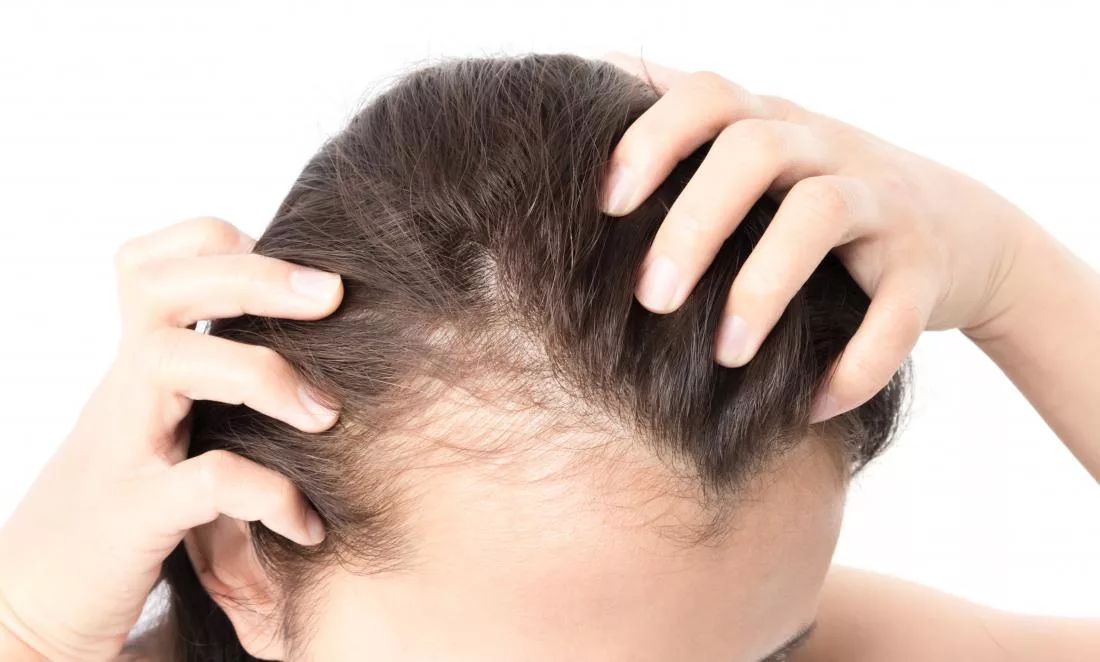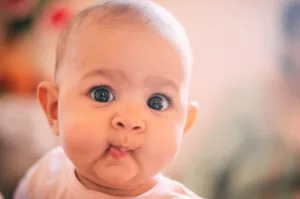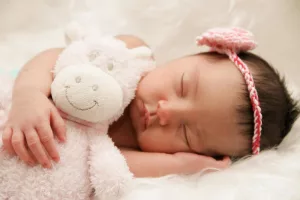Postpartum hair loss, also known as postpartum alopecia, is an experience many new mothers face in the months following childbirth. While it is often distressing to see clumps of hair in the shower or on your hairbrush, this condition is typically temporary and part of the body’s natural response to the hormonal changes that occur during and after pregnancy. For most women, this hair shedding peaks around three to four months postpartum and resolves within six to twelve months.
Understanding the factors that contribute to postpartum hair loss, the available treatment options, and strategies to prevent excessive shedding can help mothers manage this phase with confidence and ease. Navigating these changes with the right knowledge and care allows women to address their concerns effectively, focusing on restoring not only their hair health but also their overall well-being during this transitional period.
Understanding Postpartum Hair Loss
Postpartum hair loss is a form of telogen effluvium, a temporary condition where a significant number of hair follicles prematurely enter the resting phase of the hair growth cycle. This sudden shift can cause noticeable hair shedding, which may seem excessive or alarming to those experiencing it for the first time. However, it is essential to understand that postpartum hair loss is a normal physiological response to the changes a woman’s body undergoes during pregnancy and after childbirth.
During pregnancy, elevated levels of estrogen and progesterone prolong the anagen (growth phase) of the hair cycle. This means that hair that would typically shed naturally remains in place, leading to the fuller, thicker hair many women enjoy while pregnant. After childbirth, these hormone levels drop rapidly, signaling hair follicles to transition into the telogen (resting phase). As a result, hair that was retained during pregnancy begins to shed all at once, creating the appearance of excessive hair loss.
This shedding is most noticeable around two to four months postpartum, often coinciding with the end of maternity leave or a mother’s return to work, which can amplify stress and heighten concern. For most women, this hair loss is temporary, with regrowth occurring naturally as the hair cycle normalizes. However, understanding the biological processes behind postpartum hair loss can provide reassurance and help women distinguish normal shedding from underlying health issues that may require medical attention.
Causes of Postpartum Hair Loss
Hormonal Changes
The dramatic hormonal shifts that occur after childbirth are the primary drivers of postpartum hair loss. During pregnancy, estrogen levels surge, creating an environment that promotes hair retention and growth. This is why many women notice that their hair feels thicker, shinier, and healthier during pregnancy. However, after delivery, estrogen levels plummet as the body adjusts to post-pregnancy conditions, causing hair that was previously retained to shed rapidly.
This hormonal drop is a natural part of the postpartum recovery process, as the body works to reset its systems. However, the visible effects of this change can feel sudden and overwhelming, especially for women who enjoyed noticeably fuller hair during pregnancy. This hormonal shift not only affects hair but also impacts mood, energy levels, and overall health, underscoring the interconnected nature of postpartum recovery.
Physical and Emotional Stress
Childbirth is an intense physical event that places significant demands on the body. Recovery from labor, combined with sleepless nights, breastfeeding, and the constant care a newborn requires, creates a perfect storm of physical and emotional stress. This stress can disrupt the hair growth cycle by pushing more hair follicles into the resting phase, exacerbating postpartum hair loss.
Emotional stress, such as anxiety about parenting, managing household responsibilities, or returning to work, can also contribute to hair loss. The release of cortisol, a stress hormone, interferes with the normal functioning of hair follicles, further accelerating shedding. While these stressors are often unavoidable, recognizing their impact on hair health is an essential step toward addressing postpartum hair loss holistically.
Nutritional Deficiencies
Pregnancy and breastfeeding place substantial demands on the body’s nutritional reserves. Many women experience iron deficiency or low levels of essential nutrients such as zinc, biotin, and vitamins D and B-complex, which are critical for healthy hair growth. These deficiencies can arise due to increased nutritional needs during pregnancy and lactation, particularly if dietary intake does not adequately meet these demands.
For example, iron deficiency anemia, a common postpartum condition, reduces oxygen delivery to hair follicles, leading to thinning and shedding. Similarly, insufficient levels of biotin, a B-vitamin essential for keratin production, can weaken hair strands and slow regrowth. Addressing these deficiencies through diet or supplementation is key to restoring hair health and overall well-being during the postpartum period.
Thyroid Imbalances
The thyroid gland, which regulates metabolism, undergoes significant changes during and after pregnancy. Some women develop postpartum thyroiditis, a temporary condition that can cause either hypothyroidism (underactive thyroid) or hyperthyroidism (overactive thyroid). Both conditions are associated with hair thinning and may contribute to prolonged or excessive postpartum hair loss.
Symptoms of thyroid dysfunction include fatigue, mood swings, weight changes, and difficulty concentrating, which can overlap with typical postpartum experiences. If hair loss persists beyond six months or is accompanied by other concerning symptoms, consulting a healthcare provider is essential for diagnosing and treating potential thyroid issues.
Changes in Hair Care Routines
The demands of caring for a newborn often leave little time for self-care, including regular hair care. Skipping washes, reducing the use of nourishing treatments, or tying hair tightly in ponytails can lead to breakage and exacerbate the appearance of thinning hair. These practical changes, while temporary, may contribute to the overall experience of postpartum hair loss, highlighting the importance of gentle and consistent hair care practices during this phase.
Treatment Options for Postpartum Hair Loss
While postpartum hair loss typically resolves on its own, there are several treatments and strategies that can help accelerate regrowth and improve the overall health of hair and scalp. These treatments focus on addressing underlying causes, nourishing the body, and fostering a supportive environment for hair growth.
Nutrient-Rich Diet
A balanced diet is one of the most effective ways to support hair regrowth. Incorporating foods rich in iron, biotin, omega-3 fatty acids, zinc, and vitamins A and D can provide the nutrients needed for healthy hair. For example, iron-rich foods like red meat and spinach promote oxygen transport to hair follicles, while biotin supports keratin production. Adding fatty fish like salmon or plant-based sources such as flaxseeds ensures the scalp remains hydrated and nourished.
By prioritizing nutrient-dense meals, women can not only enhance hair regrowth but also improve their overall postpartum recovery. Consulting a healthcare provider or nutritionist for tailored dietary advice can further optimize results.
Postnatal Supplements
Postnatal vitamins are specifically designed to meet the nutritional needs of new mothers, particularly those who are breastfeeding. These supplements often include higher doses of iron, vitamin D, and calcium, which support hair regrowth and overall health. Adding supplements that include biotin or collagen may also strengthen hair and promote new growth.
However, supplements should always be taken under the guidance of a healthcare provider to ensure they are appropriate for the individual’s health needs and do not interact with other postpartum medications.
Use Gentle Hair Care Products
Postpartum hair is often more fragile due to hormonal changes, stress, and nutrient depletion. Switching to gentle, sulfate-free shampoos and conditioners can help protect your hair from further damage. These products are formulated to cleanse and hydrate without stripping the scalp of its natural oils. Look for products enriched with ingredients like keratin, biotin, argan oil, or aloe vera, which help strengthen and nourish hair strands.
In addition to choosing the right products, adopt gentle hair care practices. Avoid over-washing your hair, as this can lead to dryness and breakage. Use lukewarm water instead of hot, and pat your hair dry with a soft towel instead of rubbing it vigorously. These small adjustments can prevent unnecessary damage and help you maintain the health of your hair during the postpartum period.
Reducing the use of heat styling tools is another important step. Hairdryers, flat irons, and curling wands can weaken already delicate hair, increasing the likelihood of breakage. If heat styling is unavoidable, always apply a heat protectant spray to minimize damage. Embracing natural hairstyles and air-drying your hair whenever possible can make a significant difference in promoting regrowth and overall hair health.
Regular Scalp Massages
Scalp massages are a simple yet effective way to stimulate hair follicles and encourage regrowth. Massaging the scalp increases blood circulation, delivering oxygen and essential nutrients to the hair roots. This improved blood flow helps revitalize dormant follicles and supports the natural hair growth cycle.
To maximize the benefits, use natural oils like coconut oil, castor oil, or jojoba oil during your massages. These oils nourish the scalp, reduce dryness, and create a healthy environment for hair regrowth. Gently massage the scalp with your fingertips in circular motions for 5–10 minutes daily. Regular massages can also reduce stress and promote relaxation, indirectly supporting postpartum recovery.
If you prefer a more targeted approach, consider scalp massagers or derma rollers designed to stimulate follicles. These tools, when used correctly, can enhance the effectiveness of your scalp care routine. However, it’s important to avoid overuse to prevent irritation or damage to the scalp.
Topical Treatments
For women experiencing significant postpartum hair loss, over-the-counter topical treatments like minoxidil may be worth considering. Minoxidil is an FDA-approved medication known to stimulate hair growth by improving blood flow to the scalp and prolonging the growth phase of the hair cycle.
While minoxidil is effective for many individuals, it’s essential to consult a healthcare provider before use, particularly if you are breastfeeding. Some women may also experience temporary shedding when starting minoxidil, as it encourages older hairs to fall out and make way for new growth. This process can be unsettling but is generally a sign that the treatment is working.
Other topical treatments, such as hair serums containing peptides, biotin, or caffeine, can also support regrowth. These products are gentler alternatives that focus on nourishing the scalp and strengthening existing hair.
Addressing Underlying Health Issues
Persistent or severe postpartum hair loss may indicate an underlying health condition, such as thyroid dysfunction or iron deficiency anemia. These issues are not uncommon in new mothers and can significantly affect hair health. If hair loss continues beyond six to twelve months postpartum or is accompanied by symptoms like fatigue, weight changes, or mood swings, seek medical evaluation.
A healthcare provider may perform blood tests to identify deficiencies or hormonal imbalances and recommend appropriate treatments. Addressing these issues not only resolves hair loss but also improves overall postpartum health, ensuring that you feel your best during this demanding stage of life.
Prevention Tips for Postpartum Hair Loss
While it’s not always possible to prevent postpartum hair loss entirely, adopting healthy habits during and after pregnancy can minimize its severity and promote quicker recovery. These tips focus on maintaining hair health, supporting the body’s recovery, and reducing external stressors that can exacerbate shedding.
Prioritize a Balanced Diet
A nutrient-rich diet is essential for preventing and managing hair loss. During pregnancy and breastfeeding, the body requires higher levels of vitamins and minerals to support both the mother and baby. Incorporating a variety of whole foods ensures that you receive the nutrients needed for optimal hair health.
Focus on consuming lean proteins, as they provide the building blocks for keratin, the protein that makes up hair strands. Foods like eggs, chicken, fish, and legumes are excellent choices. Include dark leafy greens, such as spinach and kale, which are high in iron, a critical nutrient for maintaining healthy hair. Additionally, snack on nuts and seeds, which are rich in zinc, biotin, and omega-3 fatty acids—essential nutrients for nourishing the scalp and promoting hair regrowth.
Stay Hydrated
Proper hydration is a cornerstone of overall health and plays a significant role in maintaining a healthy scalp. Dehydration can lead to dryness and irritation, weakening the hair follicles and increasing the risk of shedding. Aim to drink at least eight glasses of water daily, adjusting for factors like breastfeeding, physical activity, and climate.
To supplement your hydration efforts, include water-rich foods like cucumbers, watermelons, oranges, and celery in your diet. These foods provide additional hydration while delivering essential vitamins and minerals to support hair health.
Gentle Hair Care Practices
Adopting gentle hair care practices is crucial for preventing unnecessary damage during the postpartum period. Avoid hairstyles that pull tightly on the hair, such as ponytails, buns, or braids, as these can cause traction alopecia, a condition where hair weakens and falls out due to tension on the scalp. Opt for loose styles that minimize stress on the hair follicles.
Use a wide-tooth comb to detangle wet hair gently, starting at the ends and working your way up to avoid breakage. Additionally, limit the use of chemical treatments like coloring or perming, as these can further weaken postpartum hair. Treat your hair with care to give it the best chance of recovering naturally.
Emotional Impact of Postpartum Hair Loss
For many women, postpartum hair loss affects more than just their physical appearance—it can also take an emotional toll. Losing hair can impact self-esteem, especially for those who experienced fuller, more vibrant hair during pregnancy. The sight of hair falling out in clumps can be distressing, leading to feelings of frustration, sadness, or anxiety.
It’s important to remember that postpartum hair loss is a temporary phase and a normal part of the postpartum journey. Reassurance from loved ones and open communication about these feelings can help alleviate the emotional burden. Support groups, whether online or in person, provide a space to share experiences and gain perspective from other mothers who have gone through similar challenges.
Caring for yourself emotionally is just as important as addressing the physical aspects of hair loss. Practicing self-compassion, focusing on the joys of motherhood, and celebrating small improvements in your hair’s health can help shift your perspective during this transitional time.
Final Words
Postpartum hair loss, though common and often temporary, can feel overwhelming for many new mothers. Understanding its causes—ranging from hormonal shifts and nutritional deficiencies to physical and emotional stress—provides clarity and reassurance that this phase is part of the body’s natural recovery process.
By exploring treatment options such as nutrient-rich diets, postnatal supplements, scalp massages, and gentle hair care, women can take proactive steps to support hair regrowth and overall well-being. Adopting preventative measures, such as prioritizing hydration, practicing stress management, and maintaining a healthy lifestyle, further aids recovery and promotes stronger, healthier hair.
Ultimately, postpartum hair loss is a reminder of the incredible changes the body undergoes during pregnancy and childbirth. With patience, care, and the right strategies, most women find their hair returns to its pre-pregnancy state. By focusing on self-care and seeking support when needed, new mothers can navigate this phase with confidence and embrace the beauty of this transformative journey.




